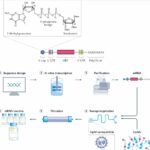 A groundbreaking supercomputer named ‘Doudna’ in Berkeley, California is set to change how AI supports government scientific research. Commissioned by the U.S. Department of Energy and built by Dell Technologies using Nvidia’s advanced chips, the system is designed to handle both modern AI applications and traditional computation with ease.
A groundbreaking supercomputer named ‘Doudna’ in Berkeley, California is set to change how AI supports government scientific research. Commissioned by the U.S. Department of Energy and built by Dell Technologies using Nvidia’s advanced chips, the system is designed to handle both modern AI applications and traditional computation with ease.
Set for a 2026 launch, ‘Doudna’ honours Nobel-winning biochemist and CRISPR co-inventor Jennifer Doudna from UC Berkeley. With performance expected to exceed previous systems by at least tenfold, this new tool aims to streamline the training of vast AI models and push forward scientific breakthroughs.
U.S. Secretary of Energy Chris Wright captured the vision well: “The Doudna system represents DOE’s commitment to advancing American leadership in science, AI, and high-performance computing.” By accelerating progress in areas like energy production and quantum computing, the supercomputer is equipped to address challenges that many researchers face.
In a notable departure from tradition, the Energy Department selected Dell over Hewlett-Packard Enterprise. Dell’s burgeoning expertise in scalable, commercial AI systems shines through in this collaboration. The project incorporates Nvidia’s Rubin chip and Arm architecture-based processors, marking a shift away from the usual reliance on Intel or AMD chips.
Blending high-precision 64-bit operations with faster 8- and 16-bit AI processes, ‘Doudna’ marries classic scientific computing with modern AI techniques. Its design also supports emerging tech like quantum computing, thanks to Nvidia’s expanding AI software ecosystem.
Paul Perez, a senior vice president at Dell, explained how this project signifies a move from custom-built systems to more modular, scalable solutions. This shift not only benefits research labs in Berkeley but also paves the way for businesses seeking adaptable, efficient computing frameworks.








